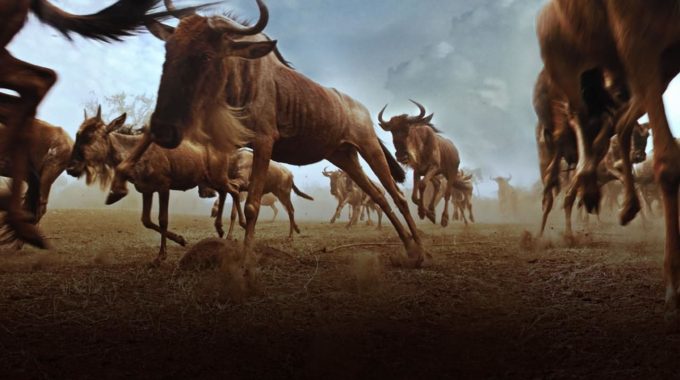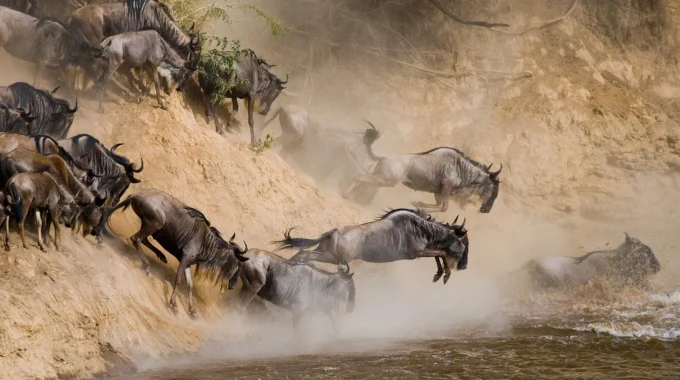A Kenya safari cost can vary significantly based on several factors, such as the season,…
What is the wildebeest migration in Kenya 2025?
What is the wildebeest migration in Kenya 2025? – The Wildebeest Migration in Kenya is one of the most spectacular wildlife events in the world, drawing thousands of visitors every year. It’s a natural migration that typically takes place between Kenya and Tanzania, involving the movement of over 1.5 million wildebeest, along with hundreds of thousands of zebras and gazelles.

Timing of the Migration
The migration primarily occurs between June and October, with the animals moving in a continuous cycle as they follow the rains in search of fresh grazing grounds. Here’s an overview of what you can expect in Kenya in 2025:
-
The Journey:
- April to June: The wildebeest start moving north from the Serengeti in Tanzania into Kenya’s Masai Mara National Reserve, typically around late June.
- July to October: This is the peak of the migration in Kenya, with wildebeest and zebras arriving in the Mara. The herds can be seen grazing on the vast plains, crossing rivers, and gathering in massive numbers.
- River Crossings: The most dramatic part of the migration is when the wildebeest attempt to cross the Mara River (around July to September). This is often when the famous river crossing scenes occur, with predators like crocodiles and lions waiting for an opportunity.
-
Key Areas to Visit:
- Masai Mara National Reserve: This is the central hub for witnessing the wildebeest migration in Kenya. It offers spectacular views of the animals and river crossings, particularly in areas like the Mara River and Talek River.
- Conservation Areas: Other conservation areas near the Mara, such as Mara North Conservancy, can also offer more exclusive wildlife viewing experiences.
-
Increased Tourism:
- The migration draws international tourists during this time, with wildlife safaris, game drives, hot-air balloon rides, and river viewing being popular activities.
- Due to its popularity, there’s often a greater demand for accommodations, ranging from luxury lodges to tented camps, particularly during the peak months of July to September.
Wildebeest Migration in 2025
- The migration in 2025 is likely to follow a similar pattern, though the exact timing can vary based on seasonal rainfall patterns. If the long rains (March-May) are adequate, it will trigger the migration northwards by late June. The peak river crossings and most spectacular wildlife action should still occur in July through September.
Environmental Considerations
- The wildebeest migration is closely tied to seasonal rains and the availability of fresh grazing. Any shifts in rainfall patterns, such as droughts or floods, can affect the timing and intensity of the migration.
- Efforts to conserve the Masai Mara ecosystem and manage tourism sustainably are ongoing to ensure the migration continues to be a viable and natural phenomenon in the future.
If you’re planning to visit Kenya during the wildebeest migration in 2025, it’s best to book early, as this is a high-demand period for safaris.



